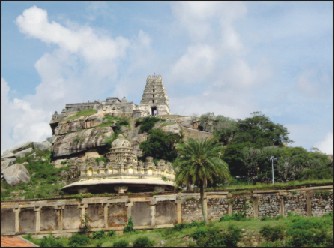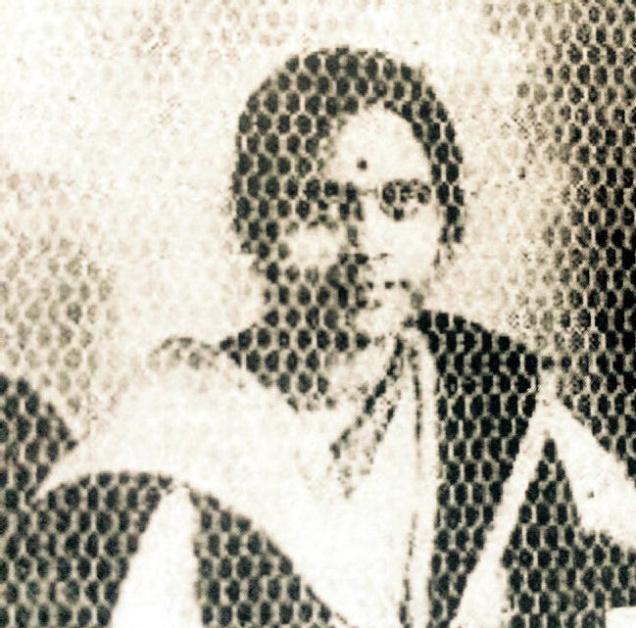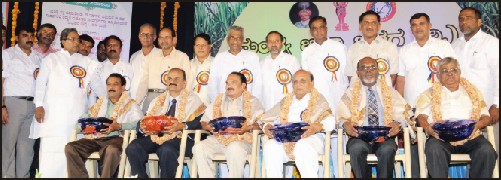by Prof. A.V. Narasimha Murthy, former Head, Department of Ancient History & Archaeology, University of Mysore
Recently I received an email from Janaki Krishnamurthy through N. Ramanuja. Actually, she had forwarded a note on the Mandyam Iyengars. Janaki is known to Mysoreans at Gokulam by the famous Andal Mandiram of which she is the Trustee and practically its sustainer. She is also connected with Lakshmi Venkataramanaswamy temple at Vontikoppal and there also she is active in socio-religious fields.
In fact, I first met her some years ago when Mathoorji’s discourses were being held at this temple. She was taking a prominent part in making it a great success by giving enough publicity and making excellent arrangements. Thus she is a good leader and organiser.
Now, let me come back to the note regarding the Mandyam Iyengars. They belong to a group of the Iyengar community which has a history going back to the times of Sri Ramanujacharya who is said to have converted Hoysala king Bittideva from Jainism to Vishnuvardhana of Vaishnavism. Melkote or Melukote became a stronghold of Mandyam Iyengars who belonged to Bharadwaja Gotra. They lived happily by performing vedic rituals and worship in temples. It is said, they migrated in a group to Melkote. They all belonged to Thangalai group of Iyengar sect. They spoke Tamil in addition to Kannada.
It is desirable to know something about this place Melkote. Situated in Pandavapura taluk, Melkote is famous as one of the four places: the remaining three being Sriranga, Tirupati and Kanchipuram. Melkote has antiquity going back to mythological times wherein it was referred to as Narayanadri, Vedadri, Yadavadri etc. During the Treta Yuga, Lord Dattatreya performed vedic discourses and it became famous as Vedadri. In Dwapara Yuga, Sri Krishna lived here and hence it became famous as Yadavadri and in the Kali Yuga it became famous by the consecration of Vishnu temples. In inscriptions it is referred to as Thirunarayanapura and Vaikuntavardhana Kshetra. While writing these sentences, my mind went to almost a decade back.
Vidya Bhavan’s Chairman Justice E.S. Venkataramaiah, who belonged to this place Tonnur, used to take lot of interest in the development of this area and I went for the first time to Tonnur and Melkote in his company and got a VIP treatment. During his life-time he used to arrange a lunch for the whole village along with special guests and I had the good fortune of being a participant twice in these lunches. I have another reason to be grateful to him. It was he who appointed me as the Chief Editor of the publication of 25 volumes of History and Culture of the Indian People in Kannada which is hailed as an important landmark among the Indian History series, originally edited by Kulapathi K.M Munshi. This runs into 15 thousand pages. Venkataramaiah is the first Chief Justice from Karnataka to adorn that coveted position. Thus he made Karnataka proud.
The seeds of Melkote are found in antiquity. According to history, the Cholas were the rulers of Tamil Nadu and were champions of Saivism. They were not well disposed towards Ramanujacharya who propagated Vaishnavism. Fearing for life, Ramanujacharya is said to have left Tamil Nadu and came to Karnataka. First he came to Tonnur or Tondanur where some disciples joined him. Subsequently, he went to Melkote. It is believed that he stayed at Melkote for twelve years. The Cheluvanarayana Temple is the most important temple here. It is a huge temple with an enclosure of 290 feet with many Mantapas. The Navaranga in front of the garbhagriha has three entrances. It also has a shrine for Ramanujacharya and the image therein is said to have been consecrated by his disciples when Ramanujacharya left for Srirangam. It is of importance to note that rituals and worship are done here as per the regulations and rules as promulgated by Ramanujacharya himself.
During the 14th Century, Melkote suffered an attack by the Muslims. However, during the Vijayanagara period, Thimmanna Dandanayaka repaired and rebuilt temples. The story of Baby Nacchiyar is very interesting. The processional image of Cheluvapillai (Narayana) was in the possession of Delhi Sultan’s daughter. Ramanujacharya, on learning about this, went to Delhi and brought back that image. Unable to bear this separation, Sultan’s daughter also came to Melkote and finally merged in God Narayana. This traditional account is not supported by facts of history. In connection with this event, even now a day is reserved for Delhi Utsava (Delhi festival).
God Cheluvanarayana continued to be important during the later periods also. The kings of Vijayanagara patronised this temple and gave many grants to it. Mysore Wadiyars were great devotees of this God. Raja Wadiyar was a great patron and donated lands and jewels. Ornaments Rajamudi and Krishnamudi are very famous. Tipu Sultan also gave many grants. Shamaiah Iyengar allied himself with dowager queen Lakshmammanni and secretly corresponded with the British. Tirumala Iyengar also helped the British. Finding two Iyengars against him, Tipu thought of destroying the Iyengars who were living in Melkote. The day he selected for this was Naraka Chaturdashi. When all Mandyam Iyengars were immersed in Deepavali celebrations, Tipu’s men entered Melkote and massacred at least 800 persons. The survivors abandoned Melkote and ran away and the town became a ghost town. Friends and relatives of Tirumala Iyengar were killed in cold blood. Thus Naraka Chaturdashi became a day of Sraddha or death ceremony.
As it happened on a Deepavali day, the day is considered as mourning day in almost all the houses. That is why the Mandyam Iyengars of Melkote do not celebrate Deepavali. This practice continues even to this day.
As one historian aptly remarked, most historians write that Tipu killed a tiger though they never saw it, but do not write about the massacre of Mandyam Iyengars though they have seen it or heard of it from authentic sources. Just for information, one of the most important Mandyam Iyengars today is the former Chief Minister of Tamil Nadu J. Jayalalithaa.
source: http://www.starofmysore.com / Star of Mysore / Home> Feature Articles / Saturday , November 29th, 2014








